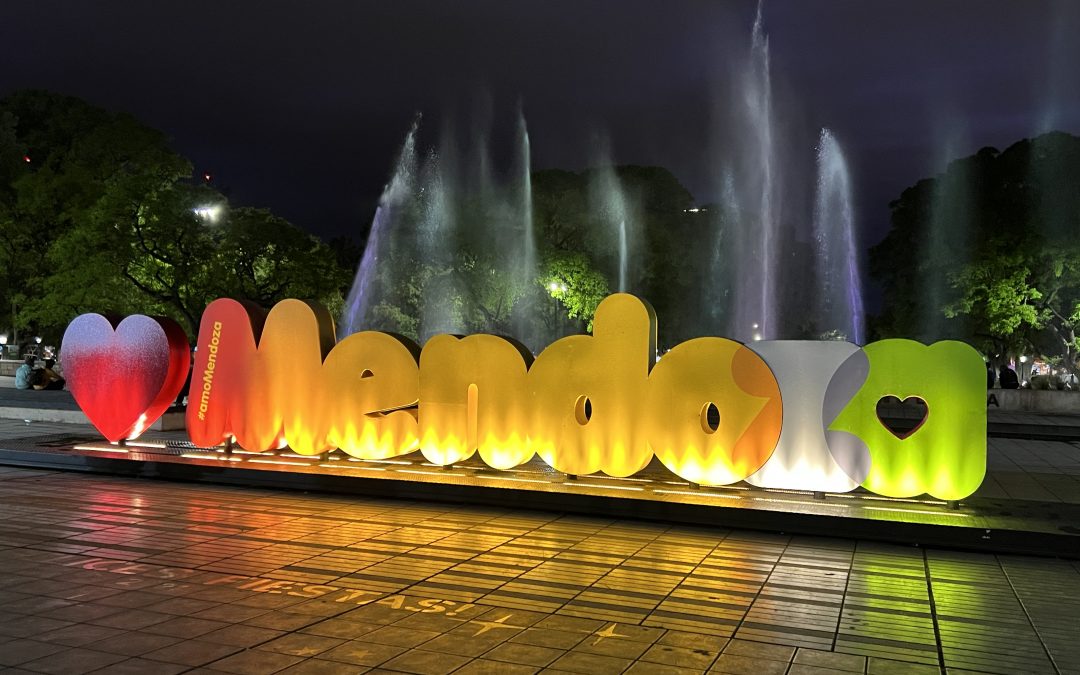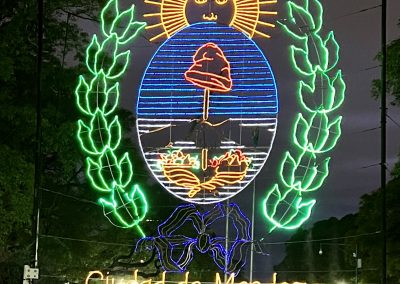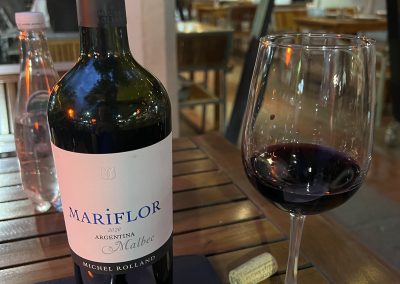If I push my stomach out, and arch my back a bit, I can just about make my feet disappear, which is gratifying. Such is the progress I have made over the past 10 days on Project “Fatten Up” ahead of the next phase of the trip, which starts from Puerto Montt on Friday. Ice-cream and empanadas, beer and Milanesa, pizza and papas fritas have all done wonders for the waistline, if not the complexion, and should help anchor me and stop me blowing away in those infamous Patagonian winds.
I pop into a bike shop to get some handlebar tape; much of it’s been torn by over-enthusiastic luggage-handlers over the past two months. The woman in the shop describes the Carretera Austral (the next section of my ride) as “dusty” and points me in the direction of a store selling breathing-equipment. She seems to speak with authority, but having just come from a very windy and dusty mountain, I’m a bit sceptical. She might be right, but if the Carretera Austral is really that bad, I’m going to have to do a “Spinal Tap” and reset the dials on my dustometer to 11.
First I need to head south, as latitude-wise I’m at the equivalent of Tenerife and need to get to Madrid. This is something I won’t be doing on my bike as it’s a long way and I don’t have that much time. Besides, the bus system in Argentina and Chile is pretty good (and cheap), even if my bike does add to the cost. While there’s no official price for a bike – it seems to be determined at the whim of the driver or the person loading the bags – the cost works out at around (mas o menos) 25% of the passenger ticket. I’m not quibbling, as I have a heavy bike, six panniers and one very smelly pair of cycling shoes.
From Fiambala to Catamarca, it’s six hours. Plenty of time to work my way through a bag of creamline toffees. It’s then a four-hour wait-over, before boarding the 11-hour night-bus to Mendoza. Altogether, this sets me back 14,500 pesos, around £80 at the time of writing – or 12p a mile, which doesn’t sound much. I’m also saving on accommodation for one night which is good too. What’s less good is the sour-faced woman at the Catamarca bus station who announces that bikes are not allowed on the Mendoza bus. I remind her that I have a ticket already, bought on the understanding that my bike would be coming with me, but she’s unmoved. I try sarcasm instead but the barbs are bouncing off her three-inch hide. Eventually I take a deep breath, resolving to take it up with the driver later. This proves to be a wise move, as the driver kisses me on both cheeks, like a long-lost friend, before slotting my bike safely under the vehicle and ushering me aboard (some of this I made up). I throw a glance of vindication at the woman on the desk, as I take my seat, but she’s busy now, curdling a bucket of milk.
The driver announces that this is the “Men-doza” bus, so I decide to heed his instructions and nod off to sleep. I’m thinking the joke will be funnier when I wake up, but it isn’t. Several stops later and we’re pulling into a bus station, looking a lot like the one we left behind in Catamarca. I’m putting my bike back together again: a source of entertainment for passengers milling about in the loading area. Less entertaining for the bus drivers who are having to manoeuvre around me.
I have five days in Mendoza, which suits me fine as it’s the nicest city I’ve been to on the trip so far. A good combination of parks and boulevards, safe and easy to navigate. It’s also the jumping-off point for climbing Aconcagua, something I would quite like to do as it would give me the one, two, three of the highest mountains in South America, which has a ring about it. I’ll never be this well acclimatised again and, weather permitting, getting to the top should be straightforward. Unfortunately, the mountain doesn’t open for another week, and the facilities at base camp (which I’d need to use) wouldn’t be available until a week after that. Realistically, this would take me through to late November and put a dent in both my wallet and my efforts to complete the Carretera Austral in time. Reluctantly, I place Aconcagua back in a box marked “some other time” and make arrangements to head over to Chile on the next available minibus. This is on Tuesday, giving me just enough time to complete a tour of the vineyards of Mendoza and the few ice-cream shops I haven’t visited so far. The vineyard tour turns into a nice day out on my bike, setting a record for the longest cycle ride around Maipu (one of the wine-growing districts) without actually seeing a vineyard. However, I did find an ice-cream shop…
I arrive in Santiago late afternoon after a relatively incident-free seven-hour journey in the sunshine. I’m busting for a wee, as 1.5 litres of coke, two-hours’ queuing at customs and a further two-hours on the bus are testing my pelvic-floor muscles to breaking point. The woman “manning” the loos at the bus station doesn’t accept Argentine pesos or IOUs, but there’s no time to negotiate as I barge by. The torrent of abuse I’m getting suggests she might be related to the woman in Catamarca. Later on, after I’ve been to an ATM, I go back and settle the debt. I’m still in her bad books and she gives me a foul look. No Christmas card from her then.
Santiago is a big, modern city. At least it has the fast-food outlets, retail stores and other trappings of a modern city, even if it’s a little soulless. The place is awash with street vendors and, with more homeless people than I saw in La Paz or Salta, poverty must be an issue here too. I shouldn’t, perhaps, judge the city based on the area I’m staying in (close to the bus station) which is a bit of a dive. But, as I’ve been here on previous trips, I don’t need to explore Santiago further before heading out, something I’ll be doing that evening, 24 hours after arriving.
The next stop is Puerto Montt and, from there, it’s a four-week ride to O’Higgins, 1,250km further south. Unlike the Puna in the north, rain is guaranteed, so I’ll have to pack my waterproofs somewhere near the top of my bag for a change. I might even get my helmet cover out if no-one’s looking. One other thing I can be sure of is there’ll be other cyclists as it’s a popular route. Mostly people head from north to south, although there’s the occasional masochist heading the other way. South to north is not only “uphill” 🤓 but into the wind. A bit of company will be nice, after all this time, although I may need to relearn the art of conversation.
More on the Carretera “Dustral” to follow…











